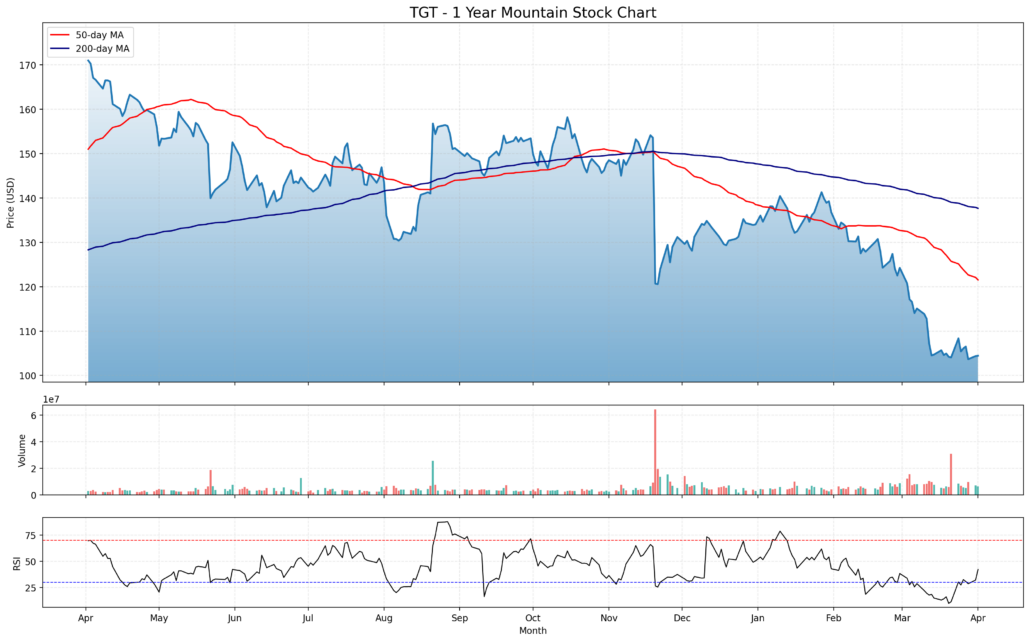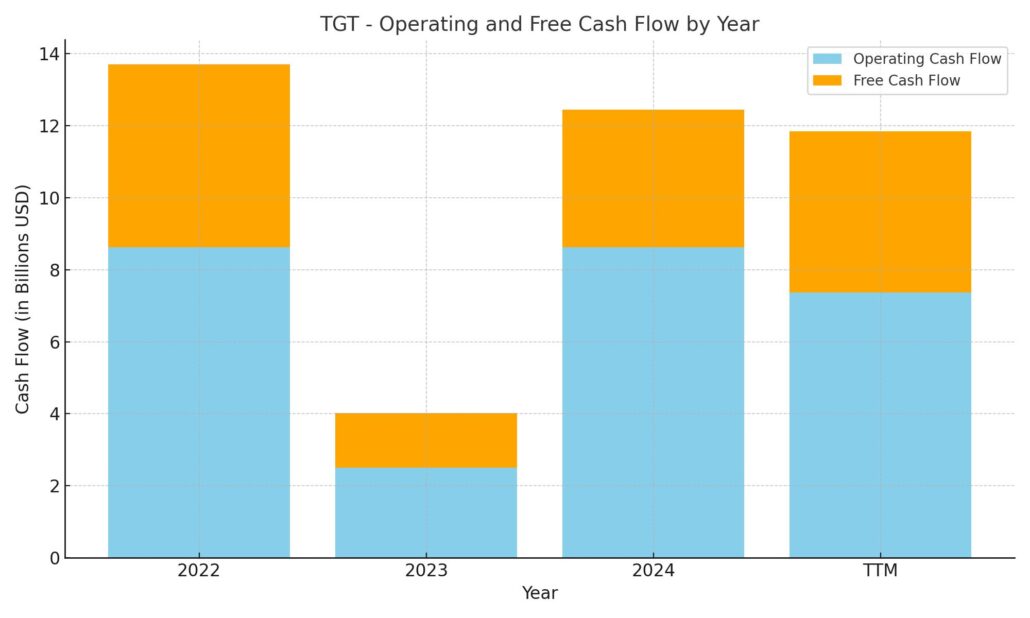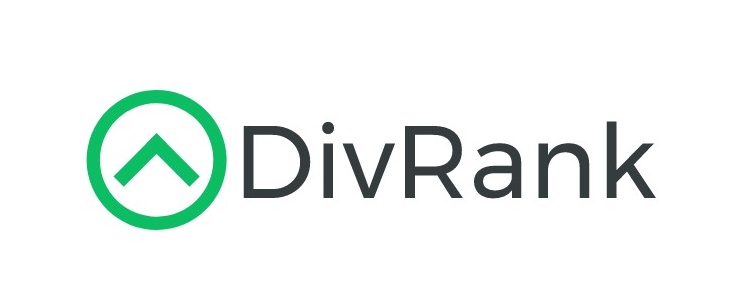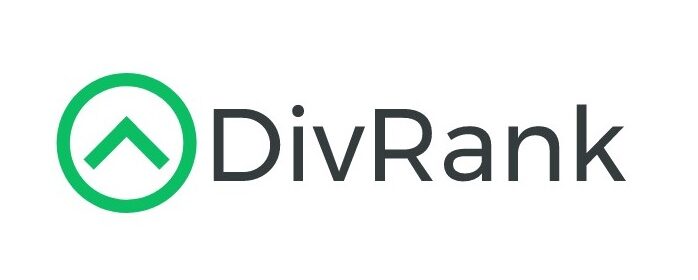Updated April 2025
Target has had a tough year and based on its leadership its no surprise. If you had a choice, why would you choose to shop at target? The stock is off more than 40% from its highs, and the retail giant that once seemed untouchable is now finding itself on the wrong side of market sentiment. But for dividend investors, there’s a much bigger picture worth looking at—one that’s built on decades of consistency, reliable cash flow, and an unwavering commitment to shareholders.
At the same time there is a moral issue that weighs heavy against the stock and could continue to cause downside pressure. This isn’t about whether Target will lead the next retail rally. It’s about what it’s still doing right for investors who prioritize income over hype. Even in the midst of economic headwinds and tighter consumer spending, Target keeps showing up where it matters most: the dividend.
🗞️ Recent Events
The past year has delivered a series of setbacks for Target. Revenue has pulled back, down just over 3% year-over-year, and earnings took a sharper hit with a decline of more than 20%. Consumer habits have shifted, with shoppers pulling back on discretionary purchases. At the same time, increased competition and supply chain snags have added pressure. Margins have compressed. Target’s net margin now stands at 3.84%, and operating margin is sitting below 5%. While not disastrous, these figures point to a business facing real challenges. Return on equity, however, remains strong at 29.1%, though it’s clear that leverage is playing a role there. The debt-to-equity ratio is currently north of 135%, which means the company is leaning a bit harder on debt than in prior years. That kind of financial profile can make investors uneasy. Yet, despite the earnings slide and margin pressure, the dividend has not only held steady—it’s grown.
📊 Key Dividend Metrics
💸 Forward Dividend Yield: 4.29% 📅 Next Dividend Payment: June 1, 2025 📆 Ex-Dividend Date: May 14, 2025 💰 Payout Ratio: 50.11% 📈 5-Year Average Yield: 2.35% 🔁 Dividend Growth Streak: 52 years 📉 Stock Price Change (52 weeks): -40.8%
💵 Dividend Overview
At the current price around $104 per share, Target is offering a dividend yield that’s rare in today’s market—especially from a company with its kind of pedigree. A 4.29% forward yield is not just attractive; it’s the highest it’s been in over ten years. And for a company that’s been raising its dividend for more than five decades, it signals strength under the surface. Right now, Target is paying out $4.48 per share annually. That payout is well-supported by fundamentals. Operating cash flow over the past year was $7.37 billion, while free cash flow after debt payments came in at $3.68 billion. That’s a solid buffer, giving the company room to manage expenses and still reward shareholders. The payout ratio of just over 50% is another encouraging sign. It’s comfortably within the range most dividend investors look for—not too low that it signals caution, and not too high that it raises sustainability concerns. It leaves breathing room if things get worse, while still delivering real income to shareholders. It’s also worth noting that Target has $4.76 billion in cash. Even in a tighter liquidity environment, that cash cushion helps support both operational flexibility and dividend commitments. The current ratio of 0.94 is a little tight, suggesting working capital isn’t as abundant as it once was, but not concerning enough to suggest trouble.
📈 Dividend Growth and Safety
Target’s dividend track record is the kind of thing most companies only dream of. With 52 consecutive years of dividend increases, it’s a textbook example of discipline and shareholder-first capital allocation. This isn’t a one-time high-yield play—it’s a commitment that’s been building since before most of today’s investors were born. That said, growth has become more conservative. The most recent dividend hike was modest, reflecting management’s prudent approach during a softer earnings period. But the fact that they increased it at all—despite declining margins and falling earnings—sends a clear message about where dividends rank on the company’s priority list. Looking at coverage, the dividend still appears very safe. With trailing earnings per share at $8.86, and a payout of $4.48, the math checks out. Even with a rough year behind it, Target isn’t overextending to maintain the dividend. From a valuation perspective, the stock is trading at a forward P/E of around 11.4. That’s not just low—it’s value territory, especially for a large-cap name with this kind of dividend consistency. You’re not paying a premium to own this income stream, which adds to its appeal for income-focused investors. Debt levels remain elevated, with nearly $20 billion in total debt. That’s something to monitor, especially in an environment where interest costs are rising. But Target’s EBITDA of $8.72 billion provides solid interest coverage. The market isn’t pricing in distress—it’s pricing in caution. All in, what you have here is a company with long-standing dividend credibility, a yield that’s finally catching up to investor expectations, and a payout that remains backed by real cash flow. Target may not be leading in top-line growth right now. But for investors who care more about dependable income than big headlines, it continues to do the one thing that matters most—deliver the dividend.
Chart Analysis

Long-Term Price Behavior
Looking at the chart, the steady upward trend that carried through most of early 2023 started to break down in mid-July. That initial drop was sharp but found support around the 200-day moving average, bouncing back into a sideways consolidation through the fall. Price briefly recovered but failed to reclaim momentum, instead forming a series of lower highs. That was the early sign that the strength in the trend was fading. By December, a clear breakdown occurred. A significant volume spike coincided with a large gap down, suggesting a major shift in sentiment—possibly following earnings or a downward guidance revision. Since then, the price has followed a persistent downtrend. Attempts to rally in January and February ran into resistance near the declining 50-day moving average, which has now crossed below the 200-day, confirming a death cross pattern. That’s often viewed as a bearish signal, and price has respected that pattern tightly since. The most recent action shows the stock hovering near $104, testing multi-month lows. The 50-day moving average continues to slope lower, around $122, and the 200-day sits even higher at $139. Those levels are well above the current price, signaling a broad downtrend still firmly in place.
Volume and Momentum
Volume tells a clear story. Noticeably higher activity in December marks the point of breakdown, followed by persistent but less dramatic volume through Q1. The most recent trading sessions show a pickup in volume as the price attempts to stabilize just above $100. It’s not a clear accumulation spike, but it does suggest some underlying interest returning at these lower levels. Momentum, as shown in the RSI, is in oversold territory. The current reading of 32.78 is pressing against the lower bound, hinting that the selling pressure may be overextended in the short term. That doesn’t mean a reversal is imminent, but it does open the door to a bounce or at least a pause in the decline.
Candle Behavior
Over the past five sessions, the candles have shown narrower ranges and small-bodied forms, with some lower wicks. This type of price action usually reflects indecision and possible absorption of selling pressure. The presence of long lower wicks suggests buyers are starting to nibble at these levels, even if they’re not pushing prices significantly higher yet. Importantly, there’s been no aggressive bullish follow-through. The market isn’t rejecting the lows aggressively—it’s more like it’s catching its breath. This kind of subtle stabilization is typical at the tail end of markdown phases, especially when valuations start looking attractive.
Technical Positioning
The bigger picture shows a clear markdown cycle still in progress, though perhaps approaching exhaustion. The major moving averages are stacked bearishly, price is below both, and there’s been no meaningful base-building yet. However, the combination of increased volume and RSI near oversold levels suggests the selling could be nearing its final phase. What comes next will depend on whether the price can hold the $100-$104 area and begin forming a higher low. Without that, any bounce is likely to be short-lived. But if support forms here, it could set the stage for a long and slow recovery. For those watching this chart with a long-term lens, this is the kind of spot where patience matters. It’s not about calling the bottom—it’s about recognizing when conditions are starting to shift from weakness to potential rebuilding.
Balance Sheet Analysis
Target’s balance sheet shows a company that’s still making money, just not as much of it as it used to. Over the trailing 12 months, total revenue came in at $106.6 billion—slightly down from the previous two years. Gross profit held steady at $30 billion, which suggests they’ve managed to maintain decent margins despite a tougher environment. Operating income is just above $5.5 billion, not too far off from last year but a far cry from the nearly $9 billion posted two years ago. The trend points to a business under some pressure but still highly functional. Net income for the trailing twelve months stands at just over $4 billion, a solid figure that reflects stability, if not spectacular growth. EPS sits around $9.43, which isn’t shabby considering the macro backdrop. Interest expenses are manageable at $411 million, and while those debt payments aren’t nothing, they’re far from a balance-sheet buster. EBITDA of $8.65 billion gives the company breathing room and some flexibility, though the downward trend in earnings is hard to ignore. Let’s just say Target isn’t riding high, but it’s not wheezing for air either.
Cash Flow Statement
Target’s cash flow from operations over the trailing twelve months came in at $7.37 billion, which, while down from last year’s $8.62 billion, still reflects a solid underlying business throwing off real cash. Free cash flow stands at $4.48 billion, a noticeable improvement from the prior year. That’s thanks in part to reduced capital expenditures, which dropped to $2.89 billion from over $4.8 billion. They’re tightening up on investment outflows, which makes sense given the earnings pressure.  On the financing side, Target spent more than $3.5 billion, largely due to debt repayments and share repurchases. They paid down $1.1 billion in debt and still found room to buy back $1 billion in stock—clearly not letting recent market sentiment dictate long-term capital return plans. Their ending cash balance climbed to $4.76 billion, the highest it’s been since early 2022. That’s a reassuring buffer, especially in a tighter economic cycle where flexibility is key.
On the financing side, Target spent more than $3.5 billion, largely due to debt repayments and share repurchases. They paid down $1.1 billion in debt and still found room to buy back $1 billion in stock—clearly not letting recent market sentiment dictate long-term capital return plans. Their ending cash balance climbed to $4.76 billion, the highest it’s been since early 2022. That’s a reassuring buffer, especially in a tighter economic cycle where flexibility is key.
Analyst Ratings
📈 Target Corporation (TGT) has recently seen a mix of analyst activity as the market digests its latest earnings and shifting retail landscape. Currently trading around $104.36, the stock is attracting attention from analysts reassessing their outlooks based on recent performance and forward expectations. 🎯 The average consensus price target from analysts stands at $133.45, with individual targets ranging from a cautious $100 to a more optimistic $155. While there’s some division in sentiment, the general tone leans toward a recovery path, assuming the company navigates near-term challenges effectively. 🔍 In March 2025, several firms adjusted their stance. Stifel trimmed its price target from $130 to $120 while maintaining a neutral “Hold” outlook, citing muted consumer demand and margin pressures. Oppenheimer, on the other hand, held firm on its “Outperform” rating, though it slightly lowered its price target to $150 from $165, reflecting a more realistic growth trajectory. Wells Fargo also nudged its target down to $135 from $150 but kept an “Overweight” view, suggesting confidence in Target’s long-term strategy despite short-term bumps. 📉 These changes follow a noticeable dip in performance metrics—quarterly revenue declined by 3.1%, and earnings dropped more than 20% year-over-year. But the broader analyst view appears to be one of cautious optimism, with the majority expecting improvement as the company addresses cost controls, inventory levels, and capital discipline.
Earnings Report Summary
Solid Quarter with a Holiday Boost
Target’s most recent earnings report painted a picture of a company still capable of flexing its retail muscle when it counts. For the fourth quarter of 2024, the company reported adjusted earnings per share of $2.41, which came in a bit stronger than what analysts were expecting. Total revenue hit $30.9 billion for the quarter—again, slightly above forecasts and a sign that consumers showed up when it mattered most. What really gave the quarter a lift was the holiday season. Target saw a 1.5% bump in comparable sales, with shoppers gravitating toward toys, apparel, and electronics. Those categories had been lagging for a while, so the rebound was a welcome sight. Seasonal promotions and new product offerings seemed to strike the right balance between value and appeal. The company clearly executed its holiday strategy well, and the results showed.
Eyes on the Road Ahead
Despite the better-than-expected numbers, Target didn’t sound overly celebratory. Management took a cautious tone when discussing the outlook for 2025. There’s still a good bit of uncertainty out there, especially with new tariffs on imports from key trading partners like China, Canada, and Mexico. These added costs could weigh on margins in the coming months, and Target knows it. Looking to the rest of the year, the company is projecting modest net sales growth of around 1%, with full-year adjusted EPS expected to land between $8.80 and $9.80. It’s a conservative forecast that reflects the economic headwinds and a bit of a wait-and-see approach on consumer behavior. In short, Target delivered a decent quarter, especially given the retail landscape. The holidays helped, operational execution was tight, but the road ahead has a few potential bumps. The company seems prepared—but it’s also staying realistic.
Management Team
Target Corporation is led by Brian C. Cornell, who has been Chairman and CEO since 2014. He’s been at the helm through a dynamic period for retail, helping the company expand its omnichannel presence and solidify its role as a national household name. With a background that spans multiple consumer brands, Cornell has brought a measured yet ambitious tone to Target’s long-term strategy. But at the same time he has led the company through may terrible decisions like selling trans bathing suits and carving out spaces that go against its customer base in the name of liberal ideology. Working alongside him is a group of seasoned leaders. Michael J. Fiddelke serves as Chief Financial Officer, steering the financial engine of the business with a focus on efficiency and sustainability. Christina Hennington is the Chief Growth Officer, responsible for new initiatives that push Target into fresh territory. Jill Sando heads merchandising, keeping shelves stocked with the right mix of essentials and on-trend offerings. And overseeing the vast logistics network is Gretchen McCarthy, whose role in supply chain operations has been especially important in the face of ongoing disruptions. Together, the executive team has weathered a challenging stretch for the retail sector while keeping the core of Target’s business steady.
Valuation and Stock Performance
As of late March 2025, Target shares were trading at around $104.36. That’s a notable slide from last year’s high of nearly $182, reflecting pressure from softening consumer demand, margin compression, and concerns around growth in a more cautious economic environment. From a valuation perspective, some analysts believe the stock is offering value at these levels. Based on estimates of the company’s intrinsic worth, there’s a case to be made that it’s currently undervalued. With an average price target around $133 and a forward P/E ratio in the low double digits, the stock doesn’t carry the premium you’d expect from a brand of Target’s scale and visibility. On the performance side, revenue for the past year came in at $106.57 billion—down just slightly from 2023. Net income clocked in at $4.09 billion, a modest dip year-over-year. These numbers show a company still turning a profit but not growing as quickly as it once did. That might not excite growth investors, but it leaves room for stability-focused investors to take a closer look.
Risks and Considerations
The road ahead for Target isn’t without its speed bumps. For starters, the competitive landscape is intense. Whether it’s Walmart’s relentless scale or Amazon’s digital dominance, Target has to constantly evolve just to keep pace. That means ongoing investment in technology, fulfillment, and pricing—none of which come cheap. Economic conditions are another wildcard. Inflation, shifts in disposable income, and consumer confidence can swing quarterly results more than some might expect. Target has proven resilient, but it isn’t immune to macro trends. There are also some less tangible challenges. In recent years, the company has found itself in the public spotlight around social and political topics. While those stances resonate with some consumers, they can just as easily alienate others. Walking that line while staying true to its values is a tightrope act the company will continue to navigate.
Final Thoughts
Target has built a reputation over decades as a reliable and customer-focused retailer. Its leadership is experienced, its balance sheet is solid, and its dividend history remains a key strength. The stock’s recent pullback reflects broader retail headwinds, but also opens the door for those looking for a long-term position in a recognizable and resilient brand. Of course, the business will need to prove it can regain momentum without overextending itself. How it balances growth, capital returns, and strategic execution in a shifting retail environment will determine how the next chapter unfolds. For now, the pieces are in place—it’s just a matter of how well they move from here.

